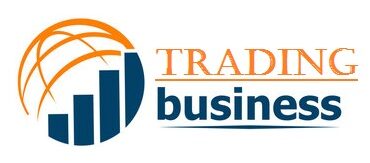Are you looking for an exciting and profitable way to venture into currency trading? The Forex market offers plenty of opportunity but can also be intimidating. One key element that must be adequately considered before jumping into the world of foreign exchange is leverage in forex. Leverage provides both potential for greater profits and increased risk when trading currencies, making it a double-edged sword that requires thoughtfulness before taking advantage or getting burned by its power.
In this article, we’ll explore what leverage is in the context of trading currencies, outline how it works within a budget constraints framework while still offering attractive returns through leveraging leads (or risks), and share strategies on how to potentially maximise the benefits and minimise losses from using leveraged funds in your trades.
What is Leverage in Forex Trading and How Does it Work
Forex trading has opened up a whole new world of investment opportunities for traders. However, to be successful, it is necessary to have a sound understanding of various trading tactics. One such essential tool in a trader’s arsenal is leverage. In simple words, leverage refers to borrowing money from a broker to increase your trading position. It lets traders magnify their profits by trading with a relatively small investment.
However, it’s important to note that trading with leverage involves significant risks, and traders must ensure that they understand the concept and its implications before utilising it. The key to successful trading with leverage is to keep a close eye on the markets and have a solid risk management plan. With practice and discipline, leverage can be an incredibly powerful tool in forex trading that can help to achieve investment goals.
Benefits of Leverage Trading in Forex
The primary advantage of trading with leverage is the potential for increased profits. Traders can use borrowed money to increase their position size and magnify gains if the trade improves. It allows traders to take advantage of even small price movements in their desired currency pair.
Another benefit of leverage is that it allows traders to diversify their portfolios without investing significant capital. With leverage, traders can access a broader range of markets and currencies that may have been out of reach without the additional funds.
Moreover, leveraging allows traders to open more significant positions with smaller account balances. It means that even those with limited capital can participate in forex trading and potentially see substantial investment returns.
Risks associated with Leverage Trading
While leverage can offer attractive returns, it also comes with significant risks that traders must be aware of. The most prominent risk is the potential for amplified losses. When trading with leverage, even a slight price movement against the trader’s position can result in significant losses, potentially exceeding the initial investment.
Moreover, using leveraged funds means traders have less control over their trades, and a sudden market shift can result in forced margin calls, potentially wiping out the entire account balance. Therefore, having a solid risk management plan and using leverage carefully and responsibly is crucial.
Tips for Managing Risk when Utilising Leverage
To effectively manage risk when using leverage in forex trading, it is essential to have a solid understanding of the markets and the currency pairs being traded. It is also crucial to carefully consider the amount of leverage being used and the potential losses that may result.
Another valuable strategy for managing risk is to set stop-loss orders, which can limit potential losses by automatically closing out a trade if it reaches a predetermined level. Traders should also avoid over-leveraging and only use leverage in trades with a higher probability of success.
Lastly, having a diversified portfolio can help mitigate risk when using leverage. By spreading investments across different currency pairs and markets, traders can reduce the impact of any potential losses on their overall portfolio.
Should You Use Leverage When Forex Trading
Using leverage in forex trading ultimately depends on an individual’s risk appetite and investment goals. While it can offer attractive returns, it is crucial to understand the risks involved and have a solid risk management plan in place.
Before utilising leverage, it is recommended to practice with demo accounts and get a feel for how leveraging works in different market conditions. This way, traders can gain valuable experience and better understand their risk tolerance before using real funds.
Take a ways from Using Leverage in Forex Trading
Leverage can be a powerful tool in forex trading, offering the potential for increased profits and access to a broader range of markets. However, it also comes with significant risks that must be carefully managed. By understanding how leverage works and having an effective risk management plan, traders can potentially maximise its benefits while minimising losses.
In conclusion, leverage is like a double-edged sword in forex trading – it can be highly beneficial if used correctly. Still, it can also result in significant losses if not managed responsibly. Therefore, traders must carefully consider their risk appetite and use leverage judiciously to achieve their investment goals.

